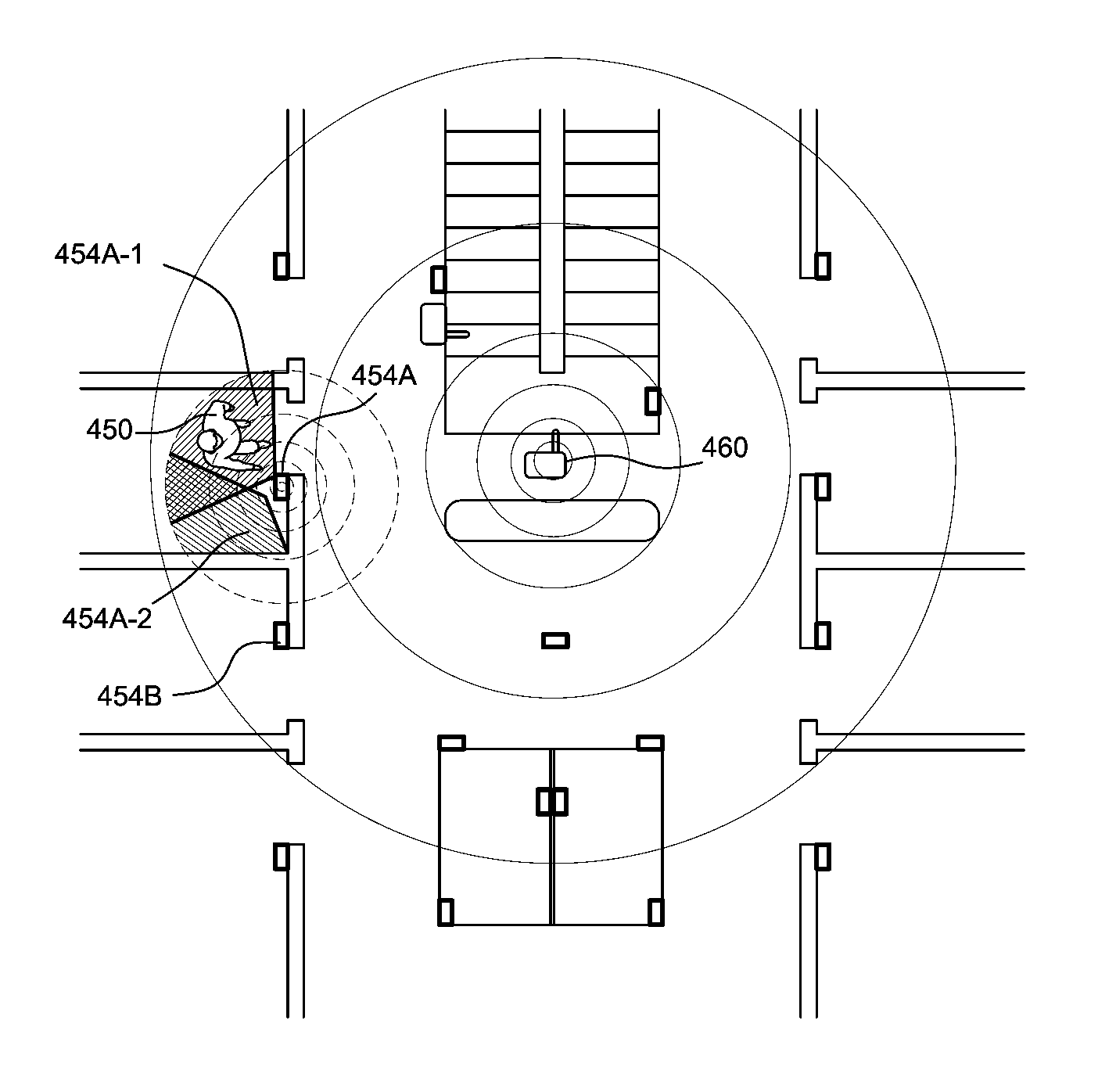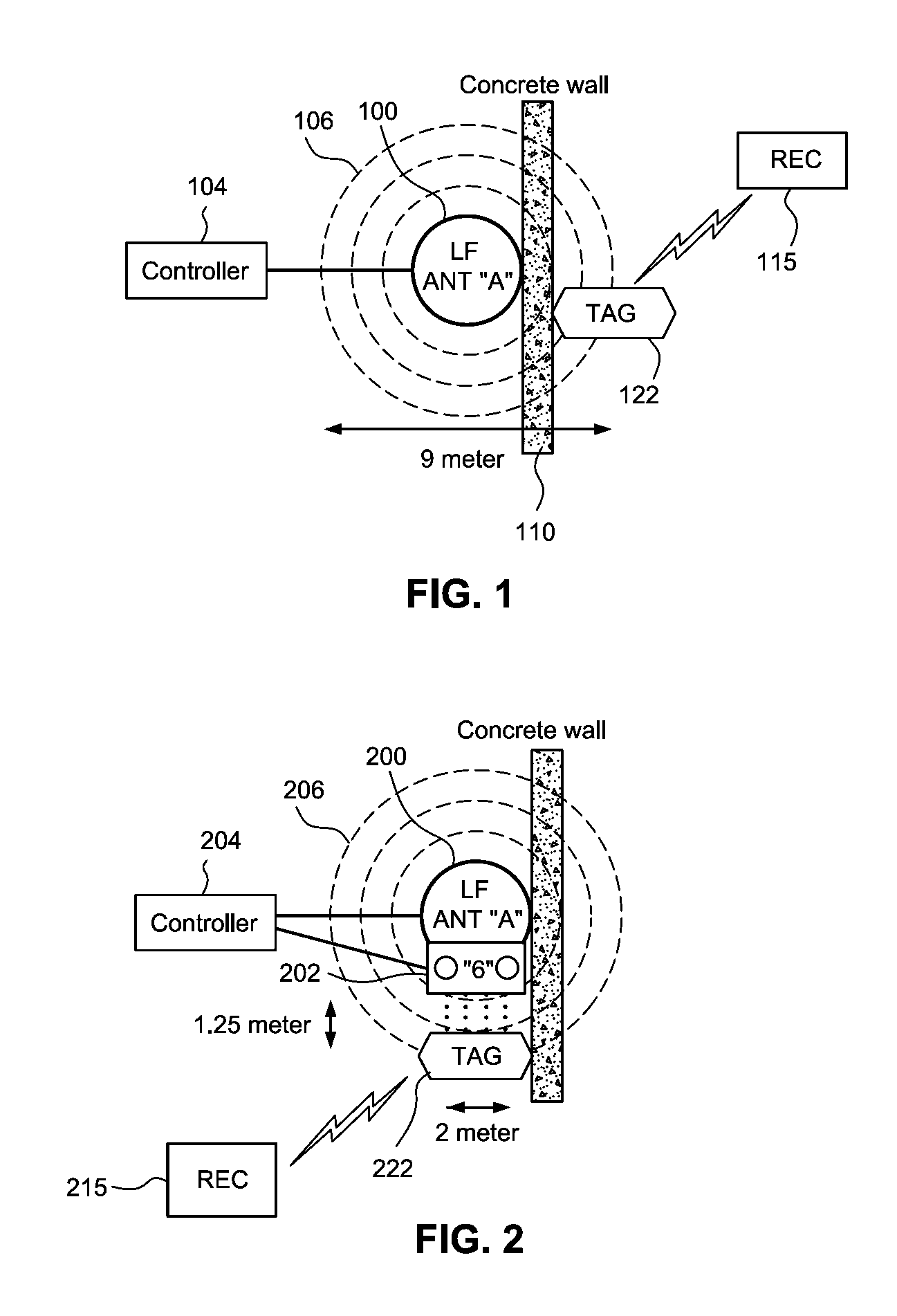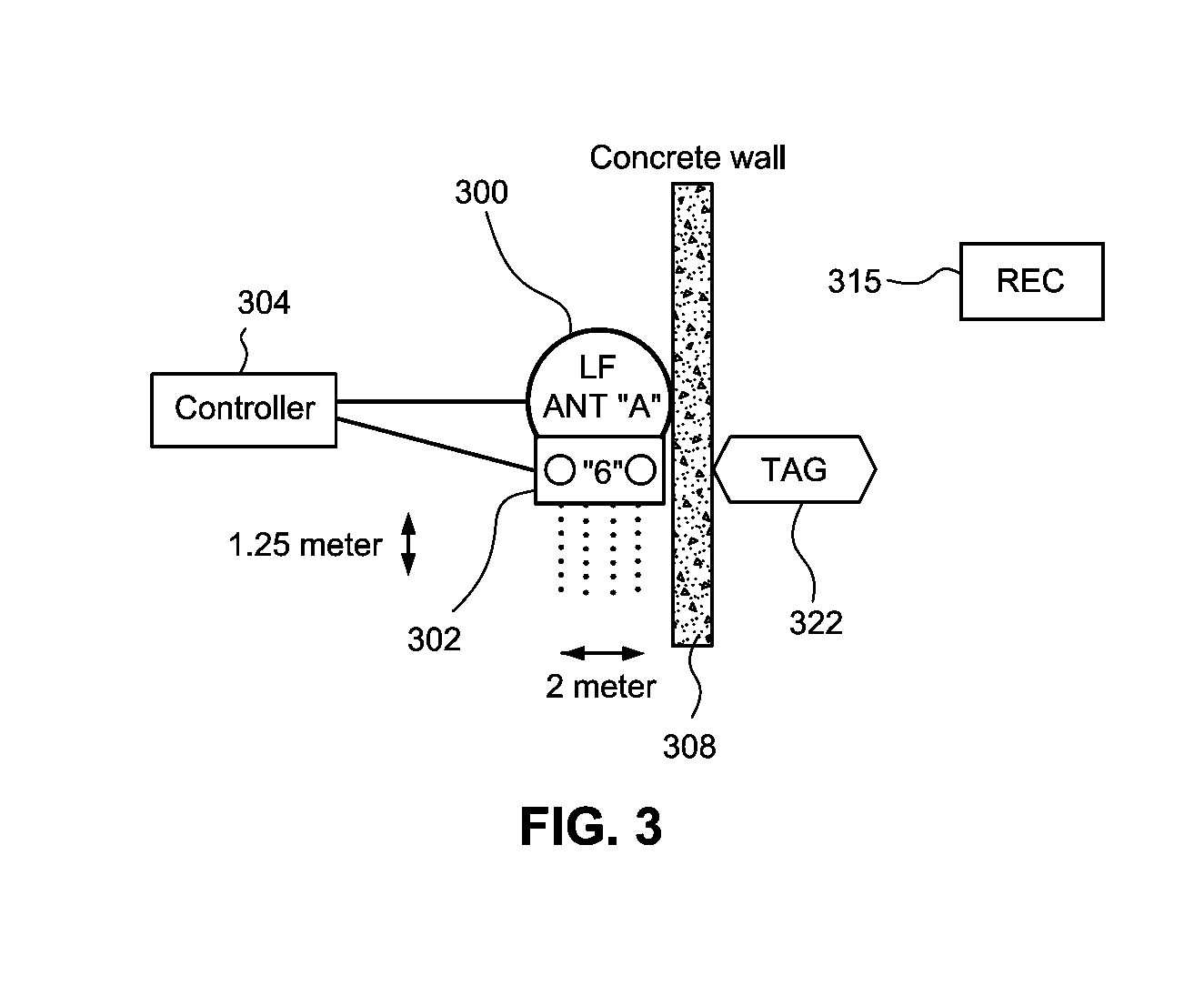System and methods of tracking using radio frequency identification
a technology of radio frequency identification and tracking method, which is applied in the direction of visible signalling system, electric/electromagnetic visible signalling, instruments, etc., can solve the problems of affecting the signal strength reading, difficult to determine on which side of the wall an rfid tag is located, and may not be preferred in indoor environments, so as to reduce the risk of emf exposure, reduce processing resources, and increase accuracy
- Summary
- Abstract
- Description
- Claims
- Application Information
AI Technical Summary
Benefits of technology
Problems solved by technology
Method used
Image
Examples
Embodiment Construction
[0042]The following description is provided in relation to several example embodiments that may share common characteristics and / or features. It is to be understood that one or more features of any of the embodiments may be combinable with one or more features of other example embodiments. In addition, any single feature or combination of features in any of the embodiments may constitute an additional embodiment. As used herein, the term “or” is meant to be inclusive (e.g., either A or B individually, or both A and B together) rather than exclusive (e.g., A or B, but not both).
[0043]Certain example embodiments herein may relate to systems and methods of tracking (e.g., in real-time) the position of an asset using radio frequency identification (RFID). In certain example embodiments, RTLS (real time location services) and RFID (radio frequency identification) are used to determine the location of a RFID tag. When the tag is in an area with an active electromagnetic radio frequency tr...
PUM
 Login to View More
Login to View More Abstract
Description
Claims
Application Information
 Login to View More
Login to View More - R&D
- Intellectual Property
- Life Sciences
- Materials
- Tech Scout
- Unparalleled Data Quality
- Higher Quality Content
- 60% Fewer Hallucinations
Browse by: Latest US Patents, China's latest patents, Technical Efficacy Thesaurus, Application Domain, Technology Topic, Popular Technical Reports.
© 2025 PatSnap. All rights reserved.Legal|Privacy policy|Modern Slavery Act Transparency Statement|Sitemap|About US| Contact US: help@patsnap.com



